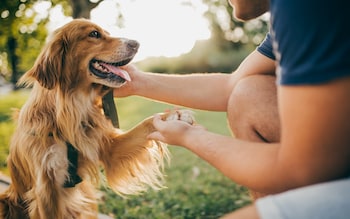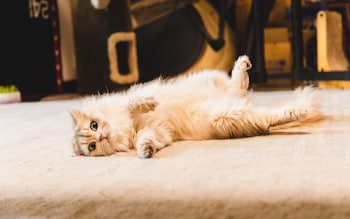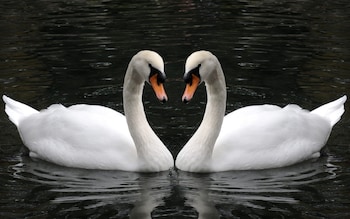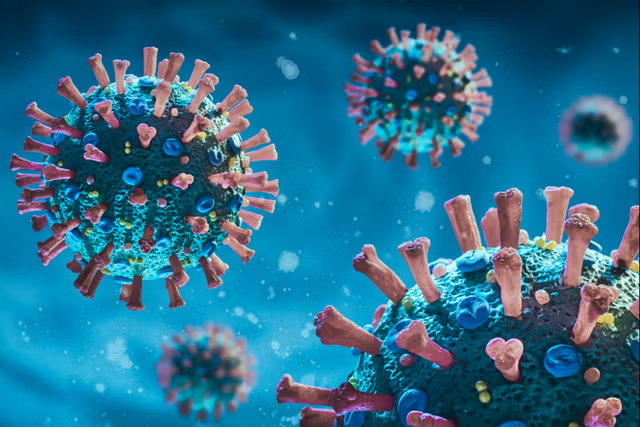Mankind’s study of the secret life of animals grows ever more anthropomorphic, with this week’s news that ants perform life-saving wound care on each other and even amputate the injured legs of their nest mates to improve their chances of survival – making them the first non-human animal that is known to do so.
Research by scientists from Britain and Australia also recently found that male dolphins rely on “wingmen” when they go on dates to help them get the girl, forming lifelong friendships or in order to be successful, develop alliance skills for adulthood and father offspring. Dr Katy Holmes, who led the study at the University of Western Australia, explains: “To be able to stay with a potential mate takes two to three males working together, coordinating their behaviour. They will stay with a female for anything from hours to weeks.”
Meanwhile, a study by Colorado State University suggests elephants give each other names (“Margery”, say, or “Mary”) and may have “words” for other animals and things which, if true, elevates them to a very small group of animals including humans that can assign abstract sounds to objects.
Here we ask experts in the behaviour and psychology of animals what these expressions and mannerisms really mean – and why they have evolved to be like this – starting with man’s best friend.
Does your dog feel real love for you?

When he first started studying dogs, zoologist Jules Howard assumed they were simply “superb attachers”, who adapt well to human groups. “A big part of the daily life of most house-trained dogs is to follow us around, repeat the things that work, sit when needed, get the treats. But actually, many of the things they do, if humans did them, we’d be like: ‘Wow, that’s love.’”
“Poets have struggled for generations to define what love means,” adds Howard (author of Wonderdog: The Science of Dogs and their Unique Relationship with Humans). “So it’s a difficult word to use with dogs, but they have many of the same hallmarks of affection as humans have for one another.”
And there is science to prove it. In 2015, he explains, researchers used an fMRI (Functional magnetic resonance imaging) scanner to examine the brains of dogs. They found the temporal cortex processes human faces and is the “pillar of social cognition in dogs”. “There’s a region of the brain that lights up called the caudate nucleus, it’s probably a mammal bit of the brain. When humans see the objects of their affection, their partner or kids, it lights up. And it’s the same with dogs.”
He goes on: “When a dog gazes at you for long periods, its oxytocin level rises by around 150 per cent. Dogs are ‘happy flags’. They have bits of their body that clearly show how they feel. Nice alert eyes mean a dog is happy, you almost get a smile in some breeds, and there’s this frantic wagging of the tail, like a composer’s baton. Dogs want others to know that they’re feeling good and that’s because of their history as a social pack animal.” But when dogs are unhappy, it’s easy to spot, he adds. Just take a look at Instagram where so many poor dogs are dressed up in outfits. “People think: ‘Oh, my dog loves me, let’s dress him up like a human’, and that obviously has welfare repercussions. In adverts with dogs you often spot they have a ‘whale eye’, a canine anxiety response where you can see the whites of their eyes. Dogs don’t naturally roll their eyes sideways like we do. We might think the dog looks whimsical but it’s a sign the dog is on general high alert.”
Dogs have a defence response of flight, freeze and fight, adds trainer Nigel Reed. Running away is clear, but avoidance behaviour is less clear. “They’ll shift their weight on their back legs, or there’s heavy panting, a furrowed brow, or something called an agonistic pucker, where the mouth makes a C shape.” A nervous freeze where a dog rolls over on its back and submits may be mistaken as cute.
Reed (author of The Dog Guardian: Your Guide to a Happy, Well-Behaved Dog) worries we’ve become too “woke”, treating dogs as our “cuddle slaves” to make us feel good. “Dogs’ lives depend on finding their status. We’ve gone from abandoning them and calling them mangy mutts to calling them our best friends and furbabies. And it needs a bit of a pullback. I’m trying to get dog owners to understand there are four roles to dog ownership: you need to be a coach, there’s a nurturing role, an authority role and a protector role.” Rather than distracting a dog from a perceived threat, we need to show we understand its fear, and are dealing with it.
Will cats really eat your eyeballs if you died in front of them?

Possibly yes. Cats do after all share a part of their DNA with lions and they will eat you if they don’t have access to other food. According to the mortician Caitlin Doughty (author of Will My Cat Eat My Eyeballs: Big Questions From Tiny Mortals About Death), they’ll usually go for the softer parts – your lips or eyelids. It sounds grisly but “cats come from a much more solitary hunting kind of place in the mammal family tree,” says Howard.
“When we think about love between people, it involves many more complexities due to our greater cognitive capacities,” says Sarah Ellis of charity International Cat Care. “I doubt cats are internally thinking ‘I love my owner because…’ but they are likely to be emotionally motivated to spend time with their owner if they are a social cat.” The difference is dogs are genetically wired to want to spend time with us. So are cats more callous? “Is self-preservation, or at least preservation of the genes, not at the heart of every living animal?” says Ellis, co-author of The Trainable Cat: How to Make Life Happier for You and Your Cat.
“I would argue it’s a pretty smart survival strategy to know how to fend for oneself and be able to remove oneself from a situation that’s not meeting your needs. If a cat feels its home doesn’t provide optimal shelter, warmth and food in a manner free of conflict, it doesn’t feel safe, and safety comes before interactions with people.” In a cat a nice slow rhythmic purr signals contentment, together with slow blinking eyes.” A cat which rolls on its side or back in slow, lolling fashion is very comfortable in your presence but don’t mistake this as an invitation to touch the tummy. A cat that is scared or finding life difficult often spends more time on its own, under or on top of furniture. Cats are very good at masking pain and stress so we owe it to them to be very good detectives!”
Do primates really feel as sad as they look in the zoo?
Many of us think that chimps and gorillas look bored and sad in zoos. But this can be seen as part of our need to anthropomorphise animals; we try to humanise them and their actions or emotions. Of course some primates appear happy and will even “smile”, baring their teeth in a fashion that seems friendly, but actually means “back off”. Other species just look naturally sad. Their facial structure may give them a permanent frown, even when they are content.
Humans are actually part of the subgroup of mammals called primates, Howard reminds us. “The reason our faces are like this is because, like dogs, we have adapted massively to express ourselves. So essentially, when the sh-- went down in the human group, 100,000 years ago, we became really good at going: ‘I’m a friend, you can trust me’, and using our eyebrows, mouths, expressions and the whites of our eyes – that’s quite an unusual primate thing.”
Can an octopus really befriend a human?
In the Netflix documentary, My Octopus Teacher, a filmmaker befriends an octopus living in a South African kelp forest. A 2022 London School of Economics and York University report found that invertebrates such as octopuses may experience curiosity in exploration, affection for individuals, or excitement in anticipation of a future reward. So there may be a point when humans can no longer assume that crayfish, shrimp, and other invertebrates don’t feel pain and other emotions.
Do swans really mate for life?

Swans are faithful partners who defend each other, says Melanie Nelson of The Swan Sanctuary but it’s more of a dynastic than a romantic relationship. “Their raison d’être, is to breed and keep the line going in, just like a medieval royal family.” Swans are very good parents mostly, but if a mate is killed, and the female swan finds a new mate, he may kill the cygnets. “They don’t want the other children to inherit anything.”
Divorce does happen, along with bigamy. “In Dorset, we had a repeat offender who had two wives, one at each end. And that was all a bit sad, because the mistress got a bad thrashing from the first Mrs. So their relationships can be just as complicated as humans.”
Disclaimer: The copyright of this article belongs to the original author. Reposting this article is solely for the purpose of information dissemination and does not constitute any investment advice. If there is any infringement, please contact us immediately. We will make corrections or deletions as necessary. Thank you.


